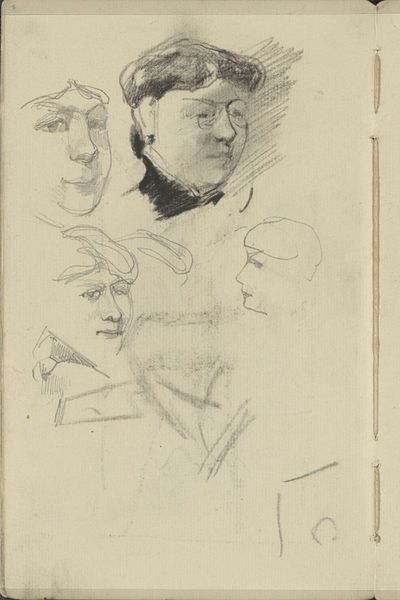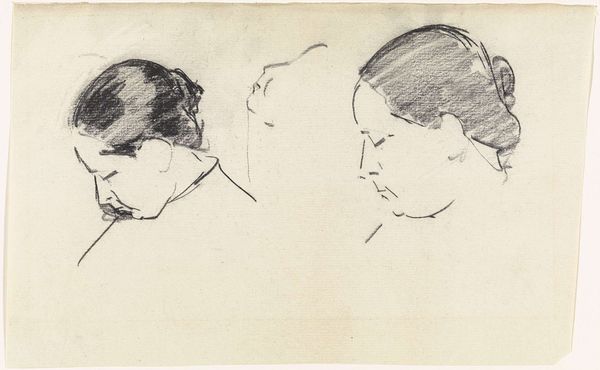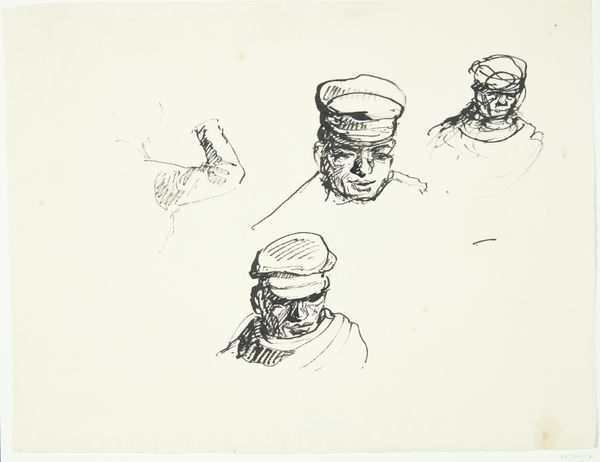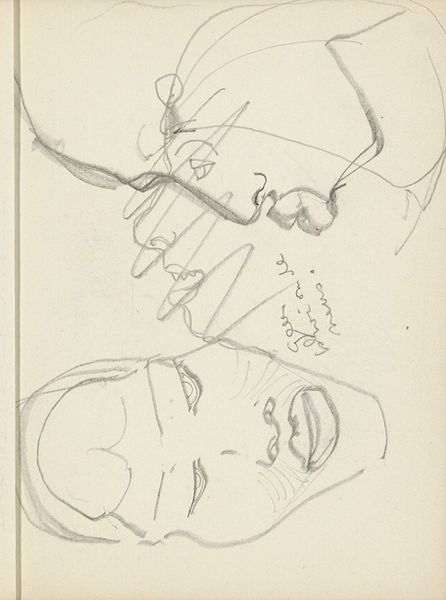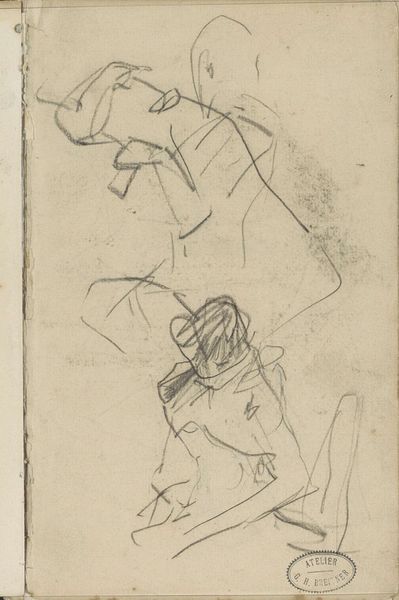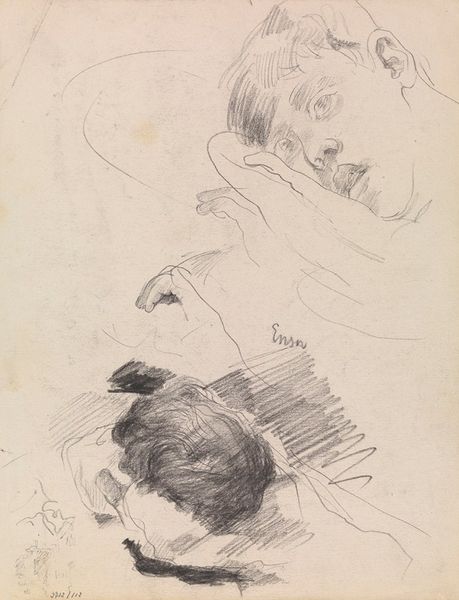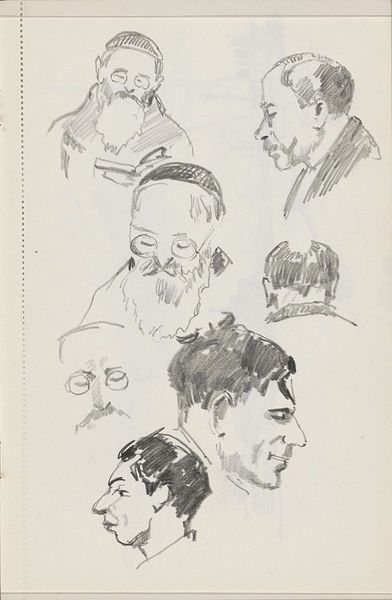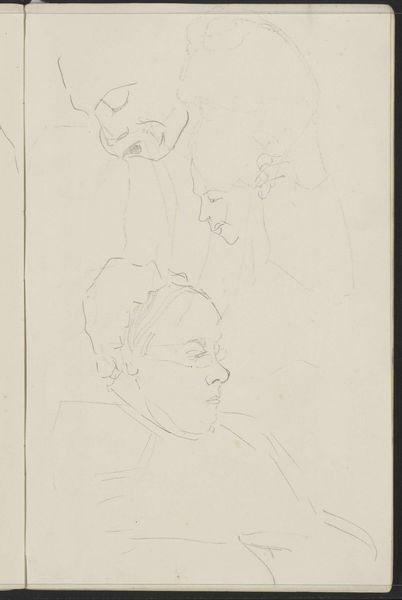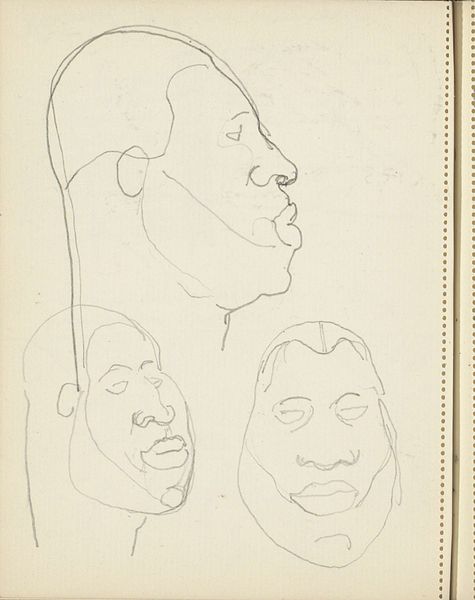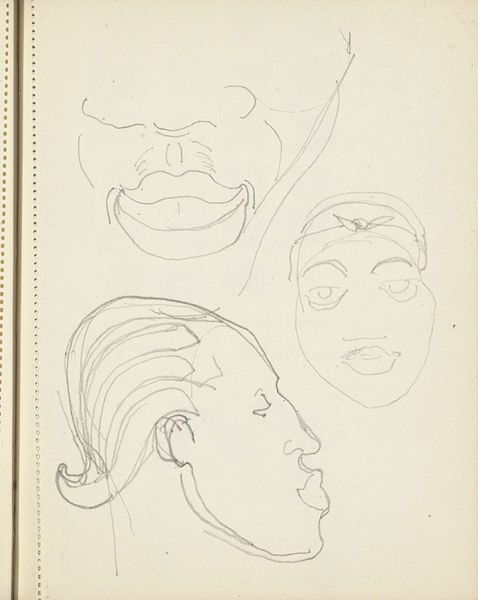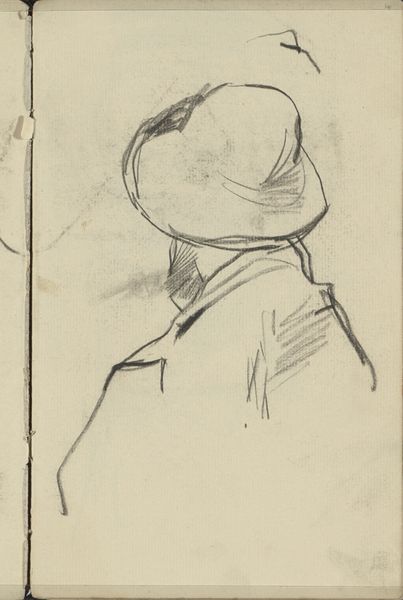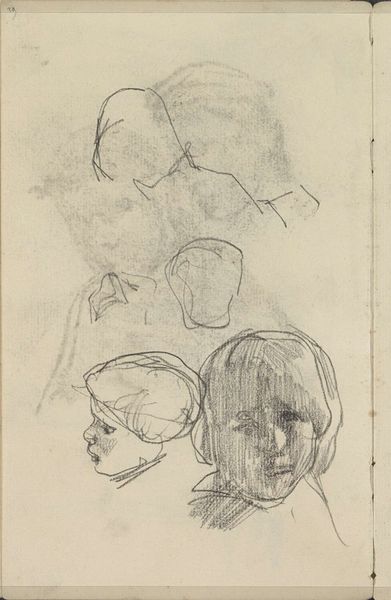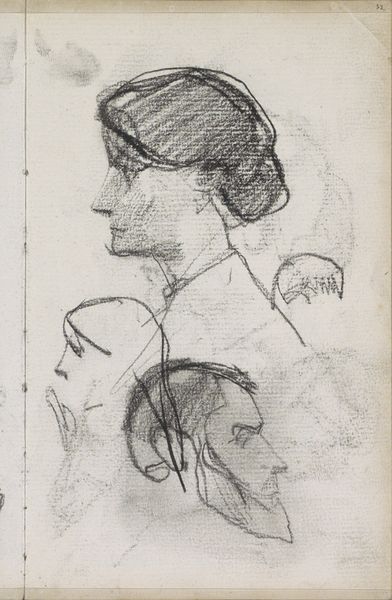
drawing, pencil
#
portrait
#
drawing
#
pencil
#
portrait drawing
#
post-impressionism
Copyright: Public Domain: Artvee
Curator: Allow me to introduce "Tahitian Heads", a pencil drawing by Paul Gauguin, dating approximately from 1891 to 1893. Editor: There's something unfinished and incredibly intimate about it. The starkness, the unadorned pencil strokes, the sense of capturing something fleeting. It feels less like observation and more like remembering. Curator: Gauguin’s choice of medium here, a simple pencil, really collapses any distinction between high art and the raw materials he was consuming and reproducing images with during this time. Think about the labor involved not just in the act of drawing, but in sourcing the graphite itself. Editor: That's fascinating! For me, it almost feels as if he is gently coaxing these faces onto the page rather than actively imposing his will on them. Like he's listening for their story rather than trying to tell it himself. Curator: Exactly! The paper itself bears witness, doesn't it? The very texture informs how the graphite is laid down, and how that relates to the legacy of French colonialism. Editor: It's so easy to lose sight of that history, focusing on the aesthetics alone. And, wow, the differing perspectives captured in such a small space is just beautiful. Each angle hints at a unique personality, a quiet dignity amidst the sketches' simplicity. Curator: Absolutely. The scale, the directness of the medium, it all compels us to reconsider what constitutes value and whose labor goes unacknowledged when we discuss "art." What are the social implications when such simple materials render people worthy of attention in a space such as this museum? Editor: Food for thought, truly. Thank you for guiding us today through a piece so apparently simple, yet layered with unseen histories and hidden echoes.
Comments
No comments
Be the first to comment and join the conversation on the ultimate creative platform.
